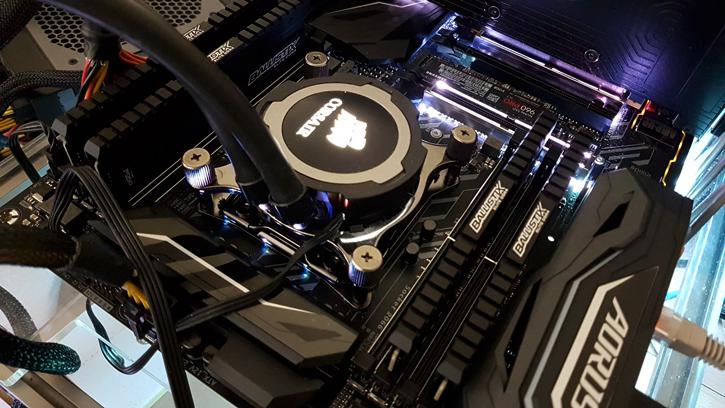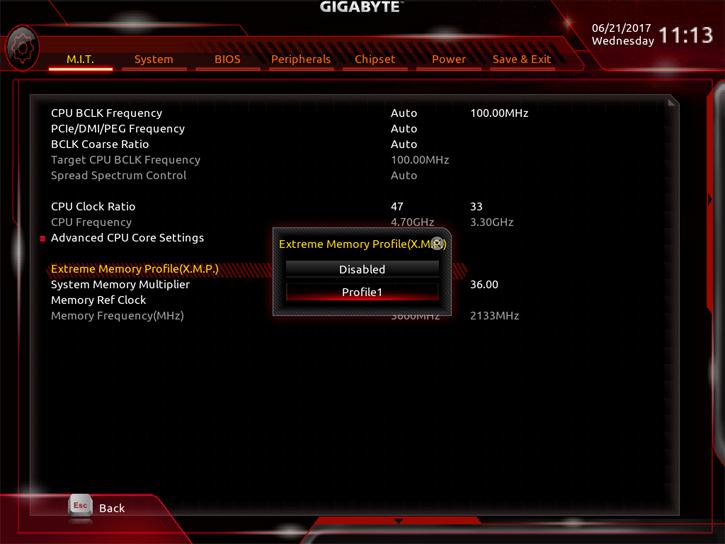Overclocking
Overclocking
Overclocking and tweaking then. Always invest in good hardware by the way (MOBO/PSU/Memory/Cooling), the cheaper motherboards often are not well tuned for enthusiast overclocking. Also get yourself a good power supply and proper processor cooling. Overclocking with a more core processor (doesn't matter if that is Intel or AMD) is far more difficult than you'd expect it to be.
Overclocking multi-core on a high clock frequency is a relatively easy to do job, and can be best managed from the BIOS.
BIOS Overclocking
The Guru3D reader-base overclocks mostly from the BIOS to try and find the maximum stable limit. The generic overclock procedure for multiplier based overclocking is as follows:
- Leave base clock (bus) for what it is right now (100 MHz)
- Set the per core multiplier at a maximum of your liking:
- Example 1: 100MHz x 45 = 4500 MHz
- Example 2: 125MHz x 37 = 4625 MHz
- Increase CPU voltage; though AUTO often works fine on many motherboards you can do it manually as well. Start at 1.30 volts and work your way upwards into a state of equilibrium in perf and cooling temps.
- Make sure your processor is properly cooled by adding voltage = more heat
- Save and Exit BIOS / uEFI
In our case we got all cores running at 4700 MHz, however, this results in tremendous power consumption and heat levels. Our Corsair LCS cooler is not capable of cooling the proc enough as shown below. In the end, we forfeited with a x47 multiplier, ~1.30 Volts and obviously, we enabled the XMP profile on the memory for quad-channel 3600 MHz.
With this Gigabyte board, we recommend leaving voltage control at auto as it works out quite well and very stable.
Be warned, this is not a pretty sight as we hit 80~90 Degrees C easily (that's even on Corsair liquid cooling). Overclocking on heat-pipe cooling is a no-go.
Power Consumption
Adding extra voltage on the CPU for the OC also has an adverse effect on the overall energy consumption. Under stress and overclocked we all of a sudden use roughly 350~400 Watts under full processor load (!). That is power consumption for the whole PC measured at the wall socket side including a GeForce GTX 1080 in idle. Overclocked in idle your system will use roughly 10 to 15 Watts more on average. So basically when the CPU is overclocked and gets added voltage and you stress all 10 cores, the PC reaches 350~400 Watts swiftly.
BCLK Tweaking
The Skylake-X PEG/DMI clock is derived from BCLK; Kaby Lake-X has an isolated PEG/DMI clock Like Core i7-7700K, 7740X and 7640X have isolated clock from BCLK. This implies no matter what BCLK you adjust to, the PCI-E clock is fixed at 100MHz. BCLK adjustment doesn’t affect the stability of the graphics cards and other PCI-E devices. However, for Skylake-X processors, PEG/DMI clock is derived from BCLK. This means that BCLK will affect the PEG/DMI clock and you have to choose appropriate BCLK: PEG/DMI ratios to make your system stable. MSI BIOS will automatically switch to the best BCLK/DMI ratios when BCLK is adjusted.
Some Results
We ran out of time, sorry, we'll look into more overclock results in a future update. But since you already have 10 cores at 4.3 and 4.5 GHz, the extra 300 MHz per core isn't going to do wonders really. It's the sum of all things that accounts for the most. Considering energy consumption and heat levels, really you need to wonder if you want to OC at all.











